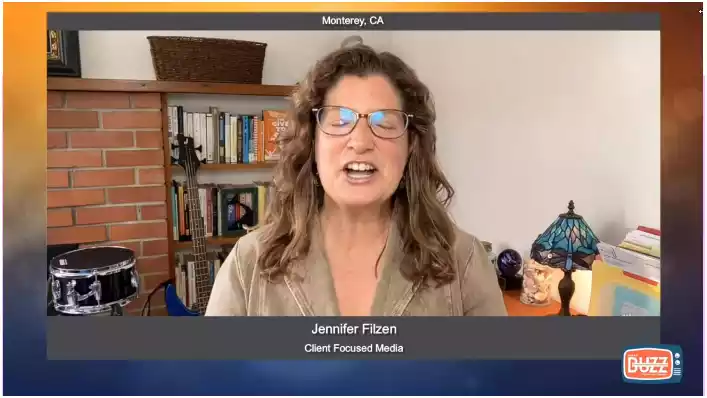Saving Time and Improving Accuracy: The Advantages of Electronic Prior Authorization
Dive into the advantages of electronic prior authorization and revolutionize your healthcare workflow. Discover how ePA simplifies processes, minimizes delays, and maximizes patient satisfaction. Explore the advantages today and elevate your practice to new heights!

Prior authorization nurses are pivotal in this transformation, navigating the intricacies of healthcare protocols to ensure timely approval for necessary treatments and procedures. With their specialized expertise, healthcare providers and patients can navigate the prior authorization process with greater ease. However, with numerous nurses offering their services, selecting the right one can be daunting. Let’s delve into the realm of prior authorization nurses, exploring their roles, skills, benefits, and considerations when choosing the most suitable nurse for your needs.
Let’s begin this discussion!
Table of Contents
Optimizing Healthcare with Advantages of Electronic Prior Authorization
 Navigating the healthcare system can be like a maze, especially when obtaining prior medical procedures and prescription authorizations. This process, typically involving paperwork, phone calls, and sometimes even appeals, is notorious for being tedious, time-consuming, and prone to errors that could delay patient care. But what if I told you there’s a tech-savvy alternative that can streamline this often frustrating process, saving valuable time and improving accuracy? Greetings from the Electronic Prior Authorization (ePA) universe.
Navigating the healthcare system can be like a maze, especially when obtaining prior medical procedures and prescription authorizations. This process, typically involving paperwork, phone calls, and sometimes even appeals, is notorious for being tedious, time-consuming, and prone to errors that could delay patient care. But what if I told you there’s a tech-savvy alternative that can streamline this often frustrating process, saving valuable time and improving accuracy? Greetings from the Electronic Prior Authorization (ePA) universe.
In this comprehensive examination, we’ll dissect the various facets of ePA, clarify its operation, compare it with traditional methods, and highlight the benefits it provides to patients, healthcare providers, and insurers.
The Timeless Barrier of Prior Authorization
Prior authorization, a term well-embedded within the healthcare industry, refers to getting approval from an insurance company before receiving coverage for specific medical services or prescriptions. It’s an essential checkpoint to control costs and ensure the prescribed treatment aligns with evidence-based standards.
Prior authorization is a strength, offering protection against unnecessary services, thereby safeguarding resources for more critical healthcare needs. However, in practice, the process often encounters significant criticism for being overly burdensome and a prime culprit in delaying vital medical care.
Breaking Down Electronic Prior Authorization
Electronic Prior Authorization (ePA) flips the page on this narrative by introducing a digital mechanism to replace the traditional, paper-laden approach. ePA integrates technology with the necessary approval workflows, enabling healthcare providers to submit and manage prior authorization requests electronically.
By cutting out the physical paperwork and the back-and-forth over phone calls, ePA cannot only automate the process but also improve the overall efficiency and accuracy of prior authorization. The fundamental ideas behind ePA are found in its capacity to improve transaction transparency and auditability, streamline decision-making procedures, and accelerate the exchange of clinical data.
How ePA Champions Patient Outcomes
The patient is at the heart of Healthcare, and any innovation within the system should be scrutinized for its impact on patient outcomes. ePA offers several compelling advantages in this arena, starting with the reduction of treatment delays.
The rapid approval turnaround time facilitated by ePA ensures that patients can swiftly access necessary medications and procedures, potentially avoiding complications and more advanced illnesses. Moreover, the electronic exchange of clinical data reduces the possibility of mistakes, ensuring that the appropriate patient gets the right care at the right time.
The Financial Facet of Electronic Prior Authorization
From a financial perspective, ePA provides a twofold benefit. Patients’ overall healthcare expenditures can be decreased by reducing delays since prompt intervention can prevent more serious health problems that would need expensive treatments.
The decreased administrative burden and more efficient use of staff resources can result in significant cost savings on the provider front. The clerical work in managing prior authorizations can be substantially reduced, freeing medical professionals to focus on patient care rather than paperwork.
Provider Perspectives and Practicality of ePA

For healthcare providers, the transition to ePA is daunting, especially for those already entrenched in their workflows. However, the practical implications of adopting ePA are nothing short of a game-changer.
- Most modern Electronic Health Record (EHR) systems can integrate ePA functionalities, tempering the learning curve.
- Once implemented, providers can experience a more unified, streamlined approach to prior authorizations, giving them more control over the process and fostering greater collaboration with insurers.
- The Insurer’s Incentive in ePA Adoption Insurers, often the gatekeepers of the prior authorization process, stand to benefit significantly from the widespread adoption of ePA. Electronic streamlining reduces operational costs and enables insurers to better adhere to regulatory compliance and service level agreements.
- Furthermore, insurers can benefit from ePA’s abundance of data by using it to strengthen member services and their risk management plans. This includes providing prescription and treatment adherence analytics, spotting possible fraud, and evaluating approval trends.
I'm very thankful for Portiva who I know is looking after my practice while I'm gone the virtual assistants can manage prescription refills, documents they can triage patients and just kind of answer administrative questions and they can handle a lot on their own. But also, they're very good about contacting me if there's any emergency or anything I need to attend to. So I'm very thankful for Portiva they can help almost any provider almost anywhere and it really allows for some good work-life balance as I'm getting to experience right now at my family farm so I'm very thankful for Portiva and I'm very happy to use their services"

Board Certified Family Medicine Physician

Portiva's Virtual Medical Assistant - I have all the support I need. There's somebody checking my email, any patient messages. Patients are still able to schedule and handle any scheduling issues and any kind of billing that needs to still go through. Portiva hands handles it all for me. I have support i have somebody that I can access 24/7 pretty much. It's all very seamless. If somebody has an emergency or needs a medication called in. I know that the va's at portiva will handle that for me.

Board Certified Family Medicine Physician

Overcoming Challenges in ePA Implementation
 While ePA presents a promising future, its implementation is challenging. Key obstacles include the need for standardization across various healthcare systems and the digital divide that can create disparities in ePA access.
While ePA presents a promising future, its implementation is challenging. Key obstacles include the need for standardization across various healthcare systems and the digital divide that can create disparities in ePA access.
Providers must also ensure the compatibility of their systems with ePA platforms, as there are perennial problems with data security and patient privacy in the digital realm. However, these are manageable roadblocks but rather opportunities for collaborative problem-solving.
The Future of ePA in Healthcare
Looking ahead, integrating ePA into the fabric of Healthcare is a matter of not ‘if’ but ‘when.’ Legislative initiatives like the SUPPORT for Patients and Communities Act are already catalyzing this shift by requiring the adoption of ePA among Medicare Part D plans.
The future landscape of Healthcare will likely see an expansion of ePA utilization, reaching into the direct-to-consumer space where patients themselves could initiate ePA requests for their prescriptions or services.
In Conclusion
Electronic Prior Authorization is a modern-day healthcare superhero, equipped with the tools to fight against inefficiency and inaccuracy and ultimately champion patient-centered care. Even though complete ePA integration may take some time, its benefits are too great to pass up. The advantages of ePA are obvious for patients, clinicians, and insurers: it’s a more streamlined, accurate, and efficient system that prioritizes patient care.
The healthcare sector may advance into a future where care is more quickly accessible and bureaucracy yields to the needs of the people it serves by realizing and embracing the promise of electronic patient records. So, let’s continue the journey towards a brighter, more connected, and more patient-centric healthcare system with ePA leading the way. As technology advances and healthcare systems become more interconnected, electronic prior authorization (ePA) will only grow in importance. ePA has the potential to completely transform the healthcare sector by streamlining decision-making procedures, improving openness and auditability, and speeding up the transmission of clinical data.
To learn more about insurance requirements that can enhance your medical practice. Discover more about Portiva and unlock a world of possibilities by visiting our homepage today!
- Balancing patient care and legal requirements in prior authorization
- Risk management’s role in prior authorization procedures
- Prior authorization laws
- Benefits and drawbacks of provider prior authorization
- Prior authorization review
- Overcoming prior authorization obstacles
- Managing authorization denials
- Patient guide to prior authorization
- Prior authorization appeals
- Administrative processes in prior authorization
- Contribution of preauthorization solutions in healthcare
- Outsourcing prior authorization services
- Value-based care and preauthorization dynamics
- Prior authorizations with remote medical assistants
- Minimizing prior authorization disputes
- Prior authorization policy changes for healthcare providers
- Technological compatibility in prior authorization
- Global best practices in prior authorization
- Data security in prior authorization

